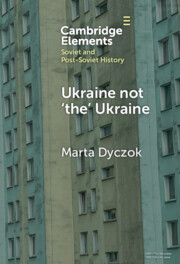Element contents
Ukraine not ‘the’ Ukraine
Published online by Cambridge University Press: 14 November 2024
Summary
- Type
- Element
- Information
- Online ISBN: 9781009365536Publisher: Cambridge University PressPrint publication: 21 November 2024
References
Primary Sources
Secondary Sources
- 3
- Cited by

